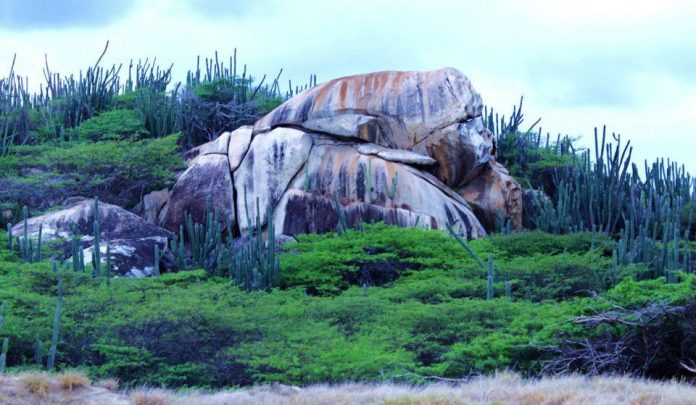As time passes by, slowly but steadily sea levels keep on the rise, when mega only lived on, in ancient stories that children love to hear. Now that big animals had disappeared completely from the hunting scene for the archaic other groups already started to exploit and developed a different life style.
Mangroves covered the leeward side of the island and the cay`s opposite the lagoon almost completely from South- East to North –West by 2800 BC to 200 AD. These first primitive aborigines denominated as archaic settlers did not master ceramic art and did not practiced organized agricultural techniques. However they must have observed that new plants could be grown out of seeds.
This raises the assumption that presumably this wave of Paleo globetrotters were that dispersed many seeds and plants wherever they believed they could ever return. The reason to import floral varieties not present at the time must have played also a vital role in their economy for some of these groups of hunters and gatherers. Soon they realized that the presence of these lush mangrove forests, were of utmost importance as a method of a sustainable livelihood, where food and many source were in abundance.
Harvesting all what these ecosystems could have offered to small groups of individuals who settled all along the coastal areas was a way of life for many generations. The balance rested in cultural dynamics versus total island population in a particular moment in time. Having such wildlife habitat on hand was a reason enough to extend and prolong permanence on the island. Mangrove eco systems provided fish, shell animals, and game all year long. Most of their tools used where made from stone -artifacts like mortar, metal and axes. They also applied cutting tools made out of shells or flint that where knapped to obtain a fine and sharp cutting edge.
Other food sources and their habitat such as savannas, open country, grasslands and hill sides. Here is where many different cactus figs could be picked.
Caribbean cherries and berries, sea grapes, guava, annonas, sapodilla, quenepa and papaya were among the sweetest fruits to recollection close to dry river beds and in to more humid soils. Bromeliads, agaves, wild herbs, certain roots and grasses where part of paleo vegetal menu.
There were also places that could resemble tropical rain forests with blooming orchids, bromeliads, lichens and mosses. Many birds and different animals had made this zone their home and for the hunter a place to obtain medicine, tea, food and feather. There were also Kwihi or Aruban Mesquite forests, which were very cool in hot days and pitch dark at night. Chronicles of a Dutch-German expedition recollecting all kinds of stuff of the island in during an1885 hike. Here they mention that they had walked for hours through a forest of big Kwihi trees. Only in very few can still find one of these native giant majestic trees ever stood have survived the deforestation which took place on this this island since colonial times for all kinds of reasons, to give you an idea how green the island was in Paleo times from the coming of the Europeans until now.
But let’s get back to the Paleolithic era where other zones of the island offered fair places to live. Places where it was relatively easy to obtain what to hunt fish or pick and safe shelters like the North side caves and bocas, a word in Papiamento meaning mouth for small inlets. Where small beaches had formed due to millions of years that rain water ran off. This carved out the coral cost in such a way that it gave access to the ocean. Huts or branch shelters were practically easy to build however for more permanent shelters; the many diorite boulders all over the island were the preferred places.
These boulders where covered with vegetation and when agave flower stacks where placed in a row next to each other against these big stone blocks, a very comfortable dwelling could be build, habitats where archaeologist had found remnants of these old settlements and what they had uncovered is for the next and last episode of the Aruban Stone Age nomads also known as the Ciboney. Follow us next week.
Source; Island Insight Column by Etnia Nativa

















